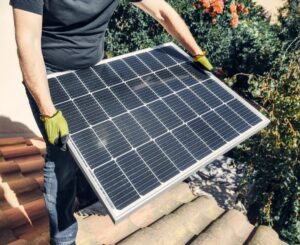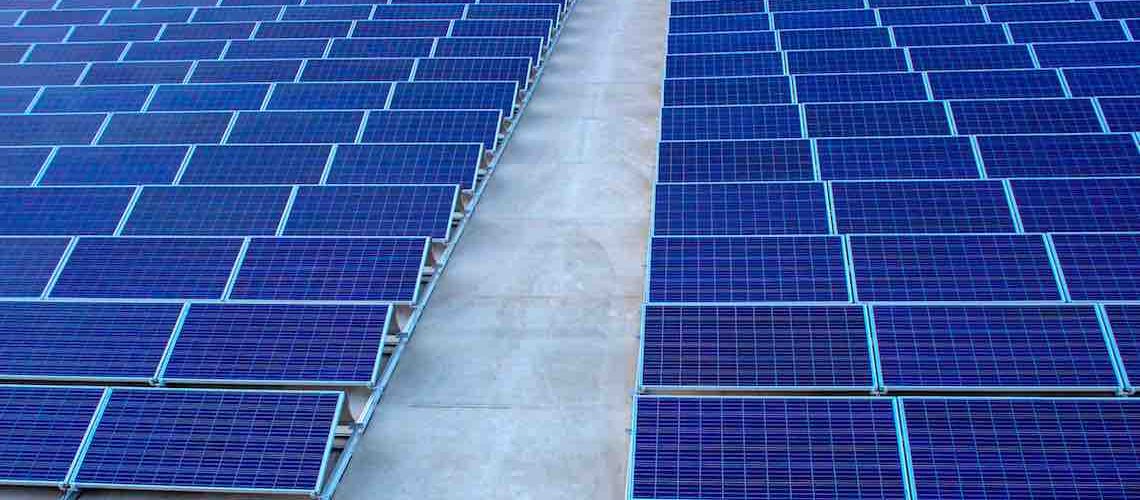India has reached a significant milestone in its renewable energy journey, with the country’s total renewable energy capacity crossing 200 GW (gigawatt). This remarkable growth means India’s non-fossil fuel energy generation is now more than 45 per cent.
According to the Central Electricity Authority, the total renewable energy-based electricity generation capacity now stands at 203.18 GW, up from 178.98 GW in October 2023.
The total renewable energy installed capacity has grown by an impressive 24.2 GW (13.5%) in just one year of which 12.6 GW was added between April and October 2024. In October 2024 alone, 1.72 GW was installed, marking an accelerated shift towards renewable energy.
When factoring in the 8,180 MW (megawatt) of nuclear capacity, India’s total non-fossil fuel capacity rose to 211.36 GW in 2024, compared to 186.46 GW in 2023.
India’s total electricity generation capacity has reached 452.69 GW, with renewable energy contributing a significant portion of the overall power mix.
The country has steadily built a diverse renewable energy base from sprawling solar parks to wind farms and hydroelectric projects. These initiatives have reduced reliance on fossil fuels and strengthened the nation’s energy security.
The total non-fossil fuel-based power now accounts for almost half of the country’s installed electricity generation capacity.

Overview of India’s Non-Fossil Fuel Energy Landscape
A variety of India’s non-fossil fuel energy sources contribute to the nation’s energy security.
- Solar power leads the way with 92.12 GW and plays a crucial role in India’s efforts to harness its abundant sunlight.
- Wind power follows closely with 47.72 GW, driven by the vast potential of the coastal and inland wind corridors across the country.
- Hydroelectric power is another key contributor, with large hydro projects generating 46.93 GW and small hydropower adding 5.07 GW, offering a reliable and sustainable source of energy from India’s rivers and water systems.
- Biopower, including biomass and biogas energy, adds another 11.32 GW to the renewable energy mix. These bioenergy projects are vital for utilizing agricultural waste and other organic materials to generate power, further diversifying India’s clean energy sources.
- Nuclear power capacity contributed 8.18 GW
Together, these non-fossil energy resources are helping the country reduce its dependence on traditional fossil fuels while driving progress toward a more sustainable and resilient energy future.
Leading States in Renewable Energy Capacity
Several states in India have emerged as leaders in renewable energy capacity, contributing significantly to the nation’s progress.
- Rajasthan tops the list with an impressive 29.98 GW of installed renewable energy capacity, benefiting from its vast land and abundant sunlight.
- Following closely is Gujarat, which boasts a capacity of 29.52 GW, driven by its strong focus on solar and wind energy projects.
- Tamil Nadu ranks third with 23.70 GW, leveraging its favourable wind patterns to generate substantial energy.
- Karnataka rounds out the top four with a capacity of 22.37 GW, supported by a mix of solar and wind initiatives.
Together, these states play a crucial role in advancing India’s renewable energy goals and establishing a more sustainable energy future.
India Rising to Global Commitments
India’s commitment to addressing climate change is reflected in its enhanced Nationally Determined Contributions (NDCs) under the Paris Agreement, incorporating the five elements outlined at COP26 in Glasgow.
These efforts align with the principles of equity and Common but Differentiated Responsibilities and Respective Capabilities (CBDR-RC), considering national circumstances.
As part of the updated NDC submitted to the UNFCCC (United Nations Framework Convention on Climate Change) in August 2022, India has committed to reducing its emissions intensity by 45% by 2030 (compared to 2005 levels), achieving 50% of cumulative electric power capacity from non-fossil fuel sources by 2030, and promoting a sustainable way of living through the ‘LIFE’ (Lifestyle for Environment) movement. These targets also contribute to India’s long-term goal of reaching net-zero emissions by 2070, supported by the ‘Long-term Low Carbon Development Strategy’ submitted to the UNFCCC in November 2022.
Wrapping Up
In conclusion, India’s non-fossil fuel energy generation has reached a significant milestone, marked by the impressive achievement of over 200 GW of installed capacity.
As India looks to diversify its sources of energy needs, this accomplishment highlights the nation’s commitment to a sustainable energy future, driven by a diverse array of renewable sources, including solar, wind, hydro, and bioenergy.
The proactive initiatives such as the National Green Hydrogen Mission, PM-KUSUM, PM Surya Ghar, and the PLI schemes for solar PV modules underscore the government’s strategic focus on enhancing energy generation capacity while reducing reliance on fossil fuels.
With ambitious targets set for the future, including a goal of 500 GW from non-fossil sources by 2030, India is well-positioned to emerge as a global leader in renewable energy, contributing to environmental sustainability and energy security.
These ongoing efforts reflect a holistic approach to building a greener economy, ensuring that India meets its energy needs and addresses the pressing challenges of climate change and resource conservation.
The article is edited from Press Release by India’s Ministry of New and Renewable Energy






Add comment